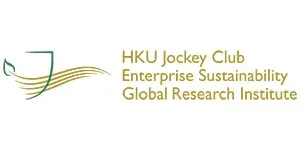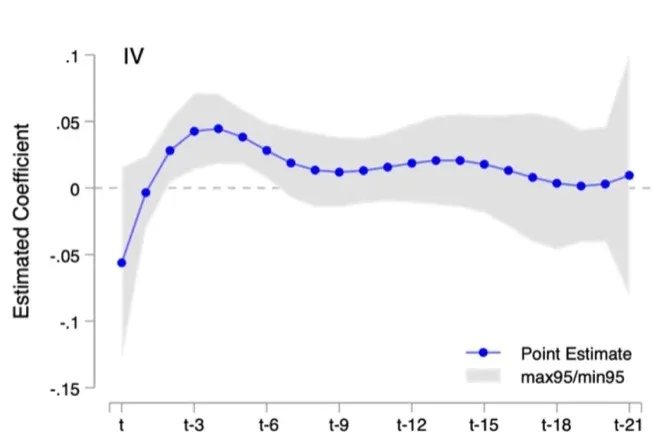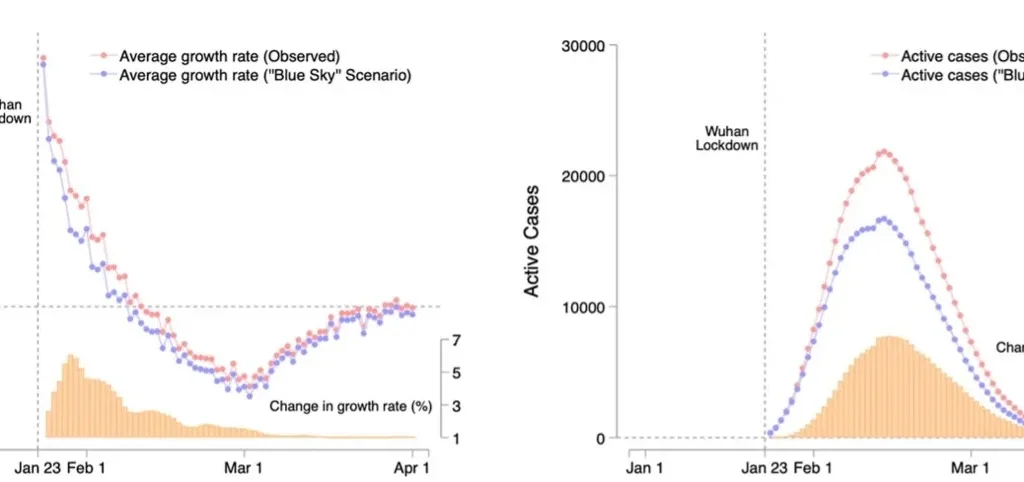
HKU Jockey Club Enterprise Sustainability Global Research Institute
World-Class Hub for Sustainability
Guojun He|Yuhang Pan|Takanao Tanaka
Air Pollution and Airborne Diseases: Evidence from China and Japan
Jan 13, 2025
Key Takeaways
- Air pollution has been linked to a wide range of health issues, but its impact on the transmission of airborne diseases such as COVID-19 and influenza remains less understood.
- Using advanced epidemiological and econometric models, this study examines the causal relationship between air pollution and the spread of COVID-19 in China and influenza in Japan.
- In China, a 10-point increase in the air quality index (AQI) leads to a 2.93-percentage-point increase in the daily growth rate of COVID-19 infections, with effects observed 2 to 13 days after exposure.
- In Japan, air pollution shows small and statistically insignificant effects on influenza healthcare visits, suggesting the relationship between air pollution and disease transmission may vary by context.
- The findings highlight the potential public health benefits of reducing air pollution, particularly during pandemics, but also underscore the complexity of the relationship between pollution and disease transmission.
Source Publication:
He, G., Pan, Y., Tanaka, T., Air Pollution and the Airborne Diseases: Evidence from China and Japan, Journal of Environmental Economics and Management, https://doi.org/10.1016/j.jeem.2025.103117
Background and Research Questions.
with the majority of the world’s population breathing air that exceeds World Health Organization (WHO) guideline limits. Although the adverse effects of air pollution on physical health, labor productivity, and mental well-being are well documented, its role in the transmission of airborne diseases remains less clear.
Airborne diseases such as COVID-19 and influenza pose significant public health and economic burdens. Scientists have speculated air pollution could exacerbate the spread of these diseases by weakening the immune system, prolonging the survival of viruses in the air, and altering human behavior. However, estimating the causal impact of air pollution on disease transmission is challenging due to the complex dynamics of viral spread, endogeneity issues, and delays in case reporting.
This study by He, Pan, and Tanaka (2025) addresses these challenges by integrating a Susceptible-Infectious-Recovered-Deceased (SIRD) model, instrumental variable (IV) approaches, and flexible distributed lag (FDL) models to estimate the impact of air pollution on COVID-19 in China and influenza in Japan.
Data and Method
The study analyzes data from the first wave of the COVID-19 pandemic in China (January to April 2020) and influenza data from Japan (2010–2018). In China, the data include daily COVID-19 cases, air quality indices (AQI), and weather conditions from 330 prefectural cities. In Japan, the data consist of weekly influenza cases and suspended particulate matter (SPM) concentrations from approximately 5,500 hospitals across 47 prefectures.
The study employs a robust methodological framework to estimate the causal impact of air pollution on the transmission of COVID-19 in China and influenza in Japan. The authors integrate the SIRD model, a widely used epidemiological framework, to capture the non-linear dynamics of disease spread. The SIRD model focuses on the growth rate of active infections, which is proportional to the virus’s transmission rate, allowing the authors to isolate the effect of air pollution on disease transmission.
To address endogeneity concerns—such as the possibility that air pollution levels are influenced by factors like economic activity or government interventions—the study uses thermal inversion as an IV. Thermal inversion, a meteorological phenomenon where a warmer air layer traps cooler air and pollutants near the ground, provides quasi-random variation in air pollution levels, making it a valid instrument for causal inference.
Additionally, the study incorporates an FDL model to account for delays between pollution exposure and disease transmission, such as incubation periods and reporting lags. The FDL model approximates these delayed effects using cubic B-spline functions, allowing for a more precise estimation of the dynamic relationship between air pollution and disease growth rates.
Results
The study finds air pollution significantly increases the daily growth rate of COVID-19 infections. A 10-point increase in AQI leads to a 2.93-percentage-point increase in the growth rate, with effects observed 2 to 13 days after exposure. This finding corresponds to a 0.15 to 0.17 increase in the reproduction number (R0), indicating air pollution accelerates the spread of the virus.
To further illustrate this impact, the study simulates a “blue sky” scenario where air quality meets the “good” standard (AQI below 100). If this standard had been maintained, the daily growth rate of infections would have dropped by 2.22%, reducing active cases by 24.7% at the peak (from 21,855 to 16,457) and cumulative cases by 27% (from 30,376 to 22,181).
By contrast, air pollution shows small and statistically insignificant effects on influenza healthcare visits. A 10% increase in SPM (1.84 µg/m³) leads to only a 0.17-percentage-point increase in the weekly growth rate of influenza cases, which is not statistically significant.
Figure 1. Selection Air pollution amplifies COVID-19 transmissivity in China and simulation of “blue sky” scenario (replacing AQI exceeding 100 by 100)

(a) Effects of air pollution on COVID-19 transmissivity in China

(b) Simulated impacts of air pollution on COVID-19 cases in China
Implications
The findings have important implications for public health policy and environmental regulation. In China, the study suggests reducing air pollution could have significant public health benefits, particularly during pandemics. For example, if China had maintained an AQI below 100 during the study period, the total number of confirmed COVID-19 cases could have been reduced by 27%.
However, the lack of a significant effect in Japan highlights the complexity of the relationship between air pollution and disease transmission. Factors such as vaccination rates, herd immunity, and baseline air quality may play a role in shaping this relationship.
For policymakers, the study underscores the importance of considering air pollution as a potential driver of infectious disease transmission, particularly in regions with high pollution levels. Investments in air pollution control could yield dual benefits: improving overall air quality and reducing the spread of airborne diseases.
For companies, the message is clear: adopting credible, transparent decarbonization strategies is no longer optional. As NZPs continue to influence capital flows, companies that fail to adopt strong decarbonization commitments risk exclusion from these portfolios, which can have significant financial implications. As such, businesses must prioritize tangible, measurable efforts to reduce carbon emissions and align their strategies with long-term climate goals.
For policymakers, DTE highlights the importance of integrating market signals into regulatory frameworks. By fostering environments that encourage transparency and the use of such indices, policymakers can expedite the transition to a low-carbon economy.